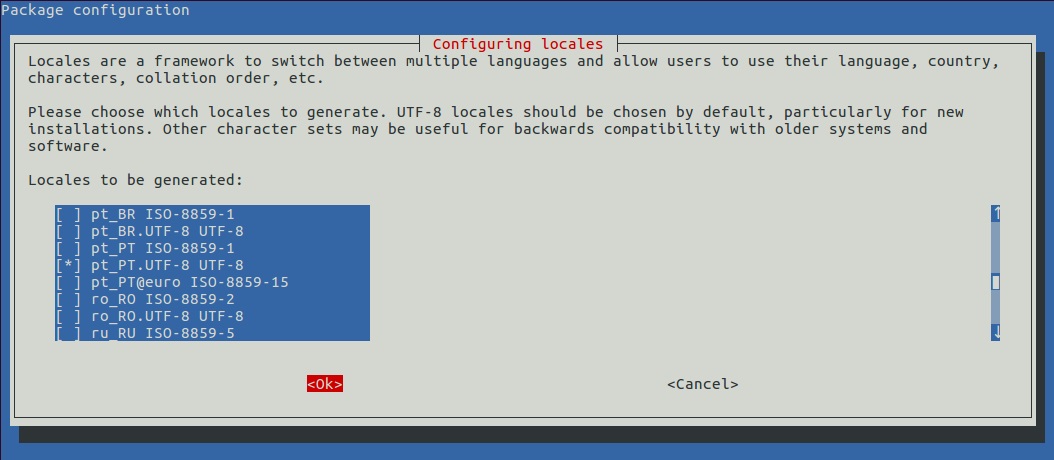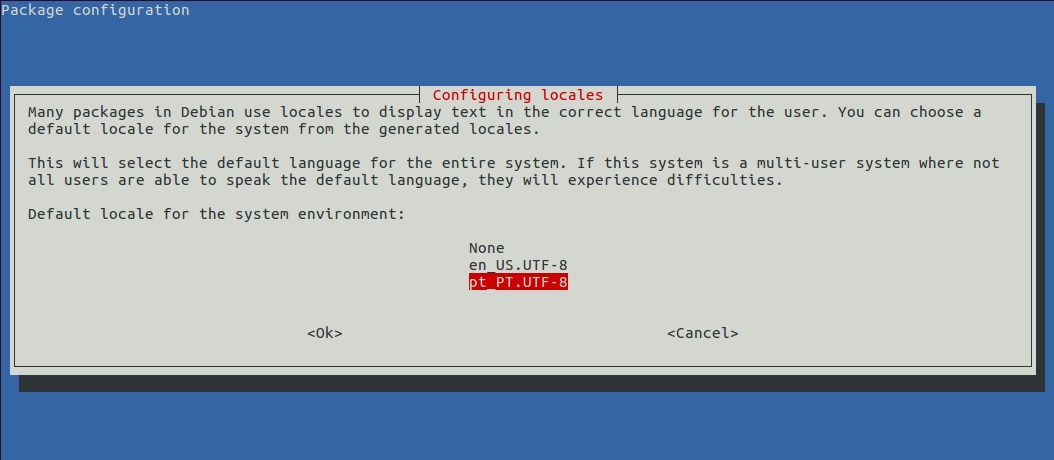Additional languages
If you wish to use PiNet with languages other than English, you have a few options.
PiNet control panel
Unfortunately right now, the PiNet control panel is only available in English.
Work is though in progress to start supporting internationalisation. If you are able to help with translating the project, please sign up on the translators mailing list here.
Raspbian
Sometimes it is ok to just have the Raspbian operating system (chroot) available to students in your home language.
By default, the Raspbian chroot will pull the locale settings from the main Ubuntu server, but if you wish to change the locales used on Raspbian, or add multiple options, follow the instructions below.
Note - Not all software may have available localisation for your language, many still only support English.
- Open a terminal on the server.
- Enter
sudo ltsp-chroot --arch armhfto enter the Raspbian chroot. - To launch the standard Debian locales selector, enter
dpkg-reconfigure locales. - Select any locales you wish to add to the chroot using the space key. Make sure to take note of the full locale name. Once you are finished, hit enter.
- In this example, Portuguese is added.

- In this example, Portuguese is added.
- Select your default locale you wish to use. Warning - LTSP sometimes ignores the default locale, so a few extra steps are needed.

- To force the default, first open the main Raspbian lts.conf file using
sudo nano /etc/lts.conf. - Inside the file, navigate to the bottom and add the line
LDM_LANGUAGE="en_US.UTF-8"(replacing en_US.UTF-8 with the locale you added earlier). Once finished, exit out of Nano by entering ctrl+x, y, enter. - Finally, recompress the chroot by from inside the PiNet control panel, selecting
Otherfollowed byNBD-recompressor enterltsp-update-image /opt/ltsp/armhf
LibreOffice (Portuguese example)
To add a locale to LibreOffice, follow this example for Portuguese.
- Open a terminal on the server.
- Enter
sudo ltsp-chroot --arch armhfto enter the Raspbian chroot. - Install LibreOffice localization and help files.
- Enter
apt-get install -y libreoffice-l10n-pt libreoffice-help-pt.
- Enter
- Install localized ‘hunspell’ dictionary.
- Search for localized version of hunspell. E.g. ‘hunspell-pt_PT’.
- Download, extract, and copy files. NOTE: These instructions are an EXAMPLE and will vary based on search results.
- Enter
cd /tmpto change to temporary directory. - Enter
wget http://natura.di.uminho.pt/download/sources/Dictionaries/hunspell/hunspell-pt_PT-20170615.tar.gzto download archive. - Enter
tar xvzf hunspell-pt_PT-20170615.tar.gzto extract files from archive. - Enter
cp hunspell-pt_PT-20170615/pt_PT* /usr/share/hunspell/to copy files to correct destination. - Enter
rm -r ./hunspell-pt_PT-20170615.tar.gz ./hunspell-pt_PT-20170615to delete temorary downloaded archive and extracted directory.
- Enter
exitto exit chroot environment. - Finally, recompress the chroot by from inside the PiNet control panel, selecting
Otherfollowed byNBD-recompressor enterltsp-update-image /opt/ltsp/armhf